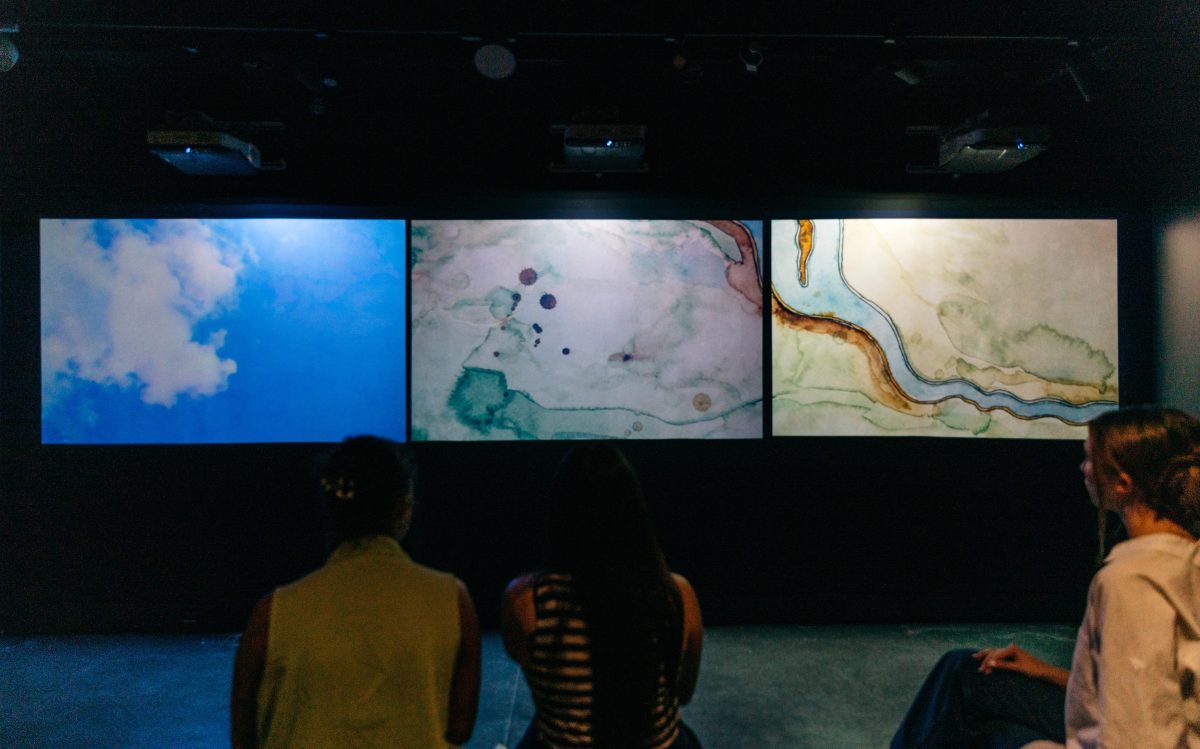Each year since its opening in 2018, The University of South Australia’s MOD. museum presents a new large-scale exhibition – broad in scope and ambitious in theme – that sits at the intersection of art and science. INVISIBILITY, the museum’s latest offering, opened its doors to the public last month and is a fitting continuation of MOD.’s vision. With a strong focus on the intricate workings of Earth’s climate and the unfathomable possibilities of data collection and manipulation, INVISIBILITY seeks to shed light on unseen forces that we cannot afford to ignore.
Given that MOD.’s website states that its exhibitions are aimed at the 15-25 age group, it is not surprising that much of INVISIBILITY feels like the kind of thing you might be taken to see on a school excursion. While moving through its smorgasbord of interactive screens, you can bleach coral with a touch of your hand or send microplastics spinning into a virtual ocean, have an AI machine analyse your face and tell you flattering things about how kind and intelligent you look, or take a quiz to see how competent you are at spotting internet fakery. And there are educational videos on everything from data footprints to deep time.
Read: Exhibition review: MENTAL: Head Inside, Science Gallery Melbourne
Among all this family-friendly fun, there are some arrestingly impressive pieces of art and innovation. In the mesmerising exhibit Ngapulara Ngarngarnyi Wirra (Our Family Tree), data captured from tracking AFL player Adam Goodes’s movements (ten times per second in every game) has been brought to life in a 3D point cloud surrounding a scan of a culturally significant Wirra (tree).
A room titled Time Reveals the Unseen features a large, suspended globe and a control panel that allows the viewer to manoeuvre the sphere and project onto it various maps and visual representations of global changes over time, such as drought risk, surface temperature, ice concentration, marine debris, and carbon levels. With the room to yourself, you could spend hours exploring climate data; with others waiting their turn and children running around, you can at least get a glimpse of the astonishing research that went into it.
For all its warnings about the insidiousness of personal data tracking, the exhibition is keen for you to plug into its own online features. Each exhibit has an accompanying QR code, and at numerous points you are invited to download an app or visit a website and fill in some details for an enhanced interactive experience. A sign towards the end of the exhibition gleefully informs you that your movements around the museum have been recorded by surveillance cameras as part of a project to understand how the public interacts with gallery spaces.
Above all, then, INVISIBILITY is about data gathering, and the opportunities and concerns it presents us with in a future characterised by rapidly evolving technology and an impending climate disaster. With 13 exhibits over multiple rooms and storeys, there is a lot to take in, but visitors need not cram everything into just one viewing. INVISIBILITY is a welcome addition to a necessary conversation – one that will require collective involvement and continued revisiting.
INVISIBILITY, MOD. Museum, Adelaide
INVISIBILITY will be on display until November 2022





